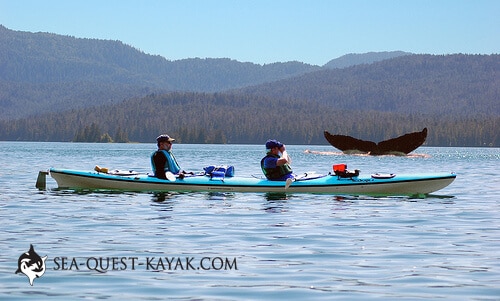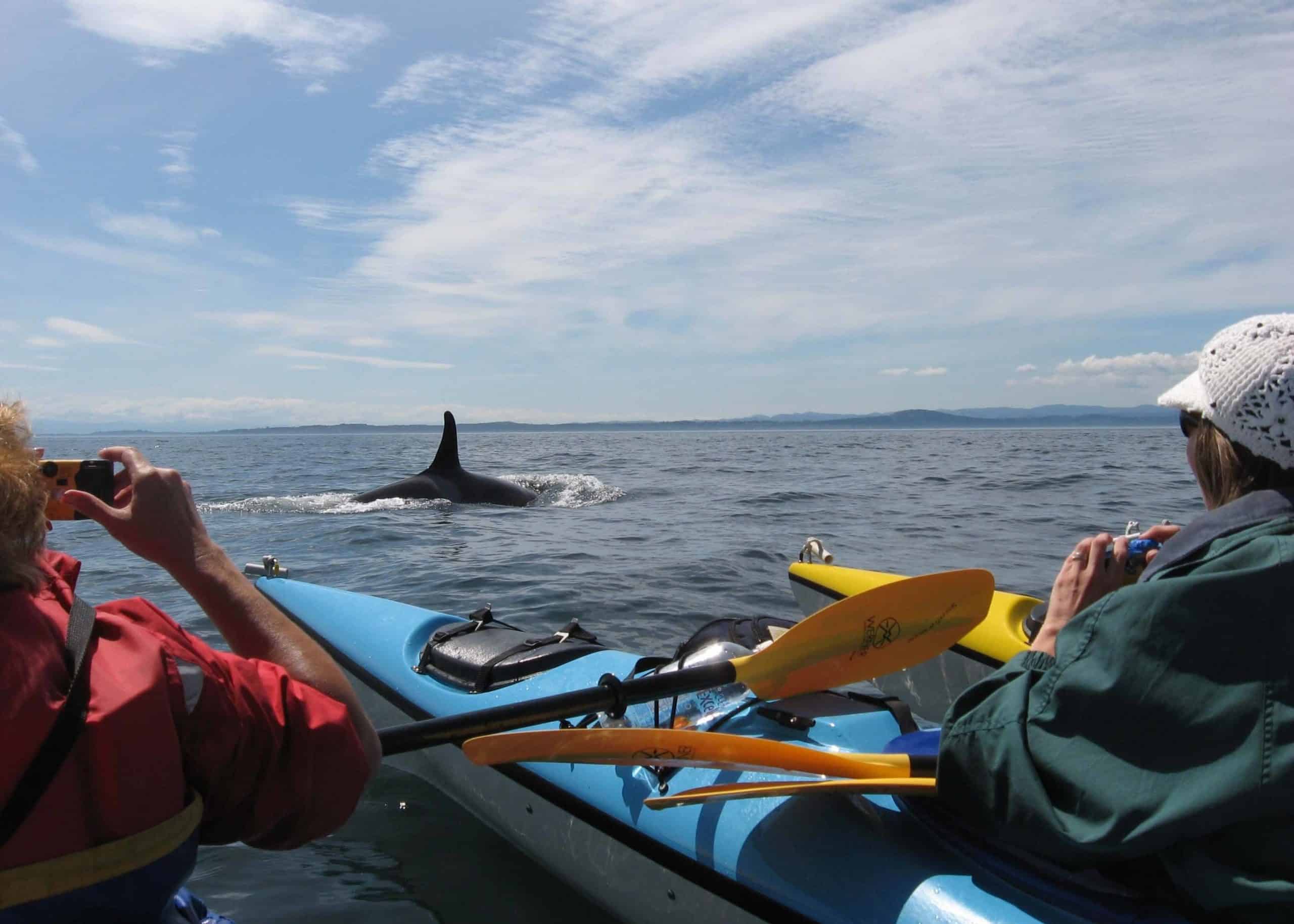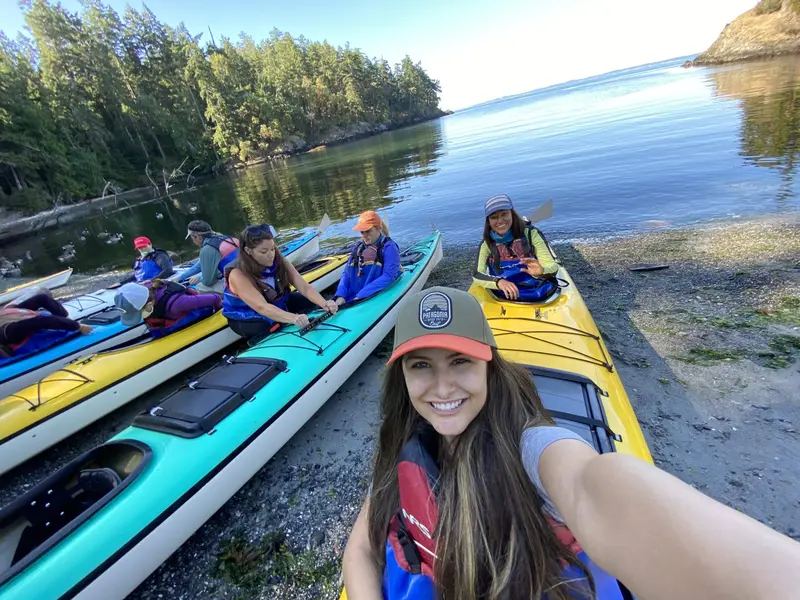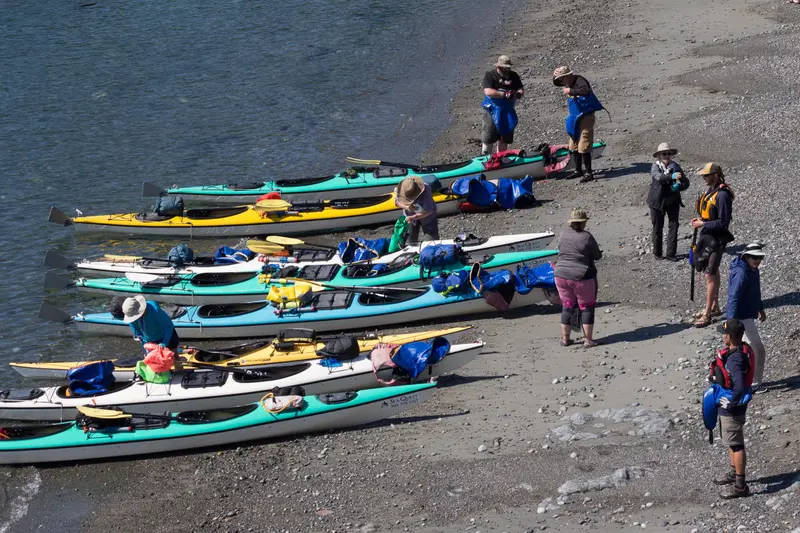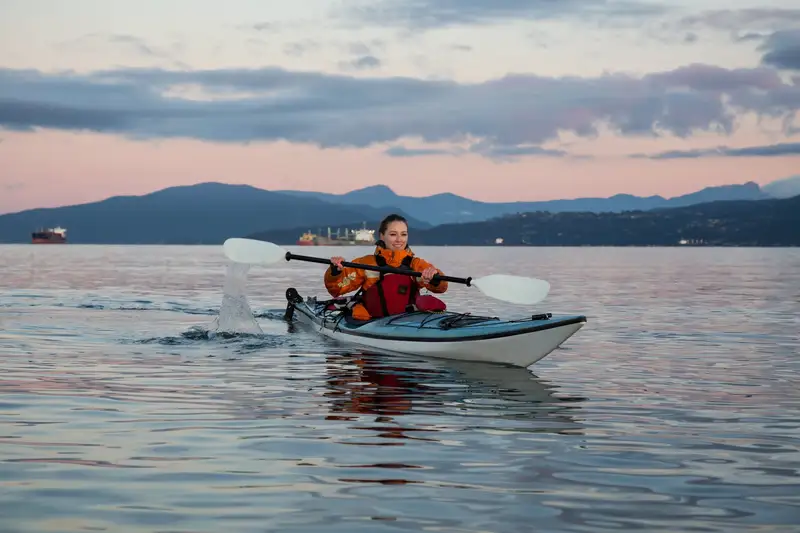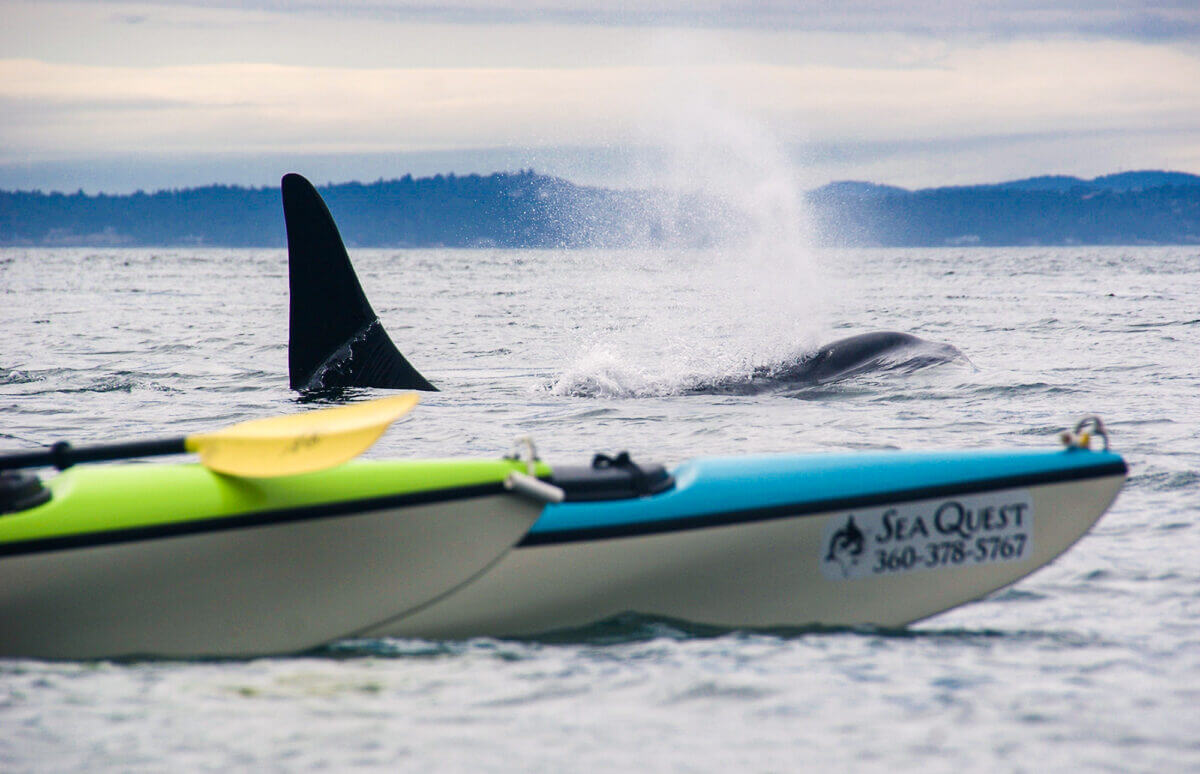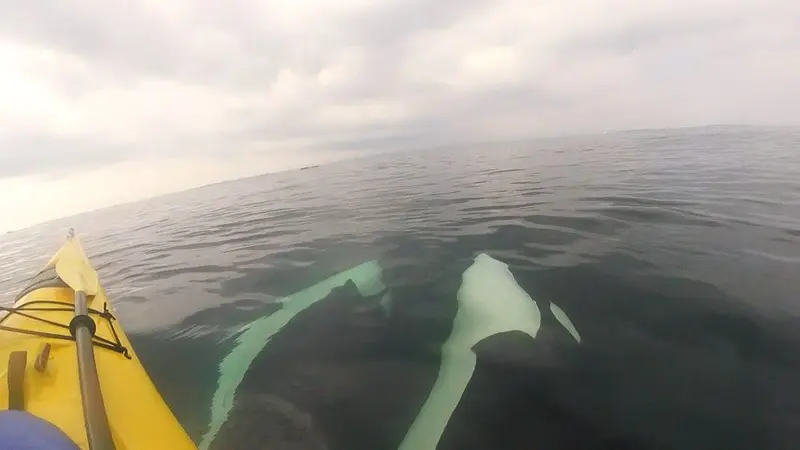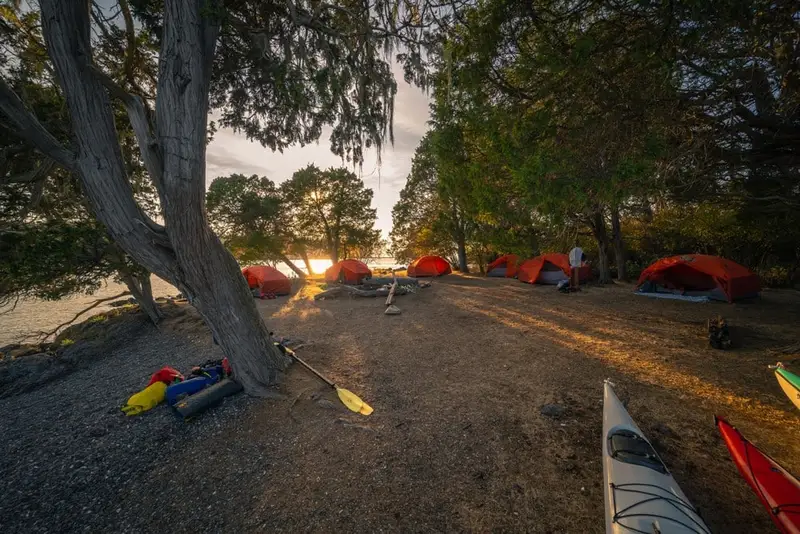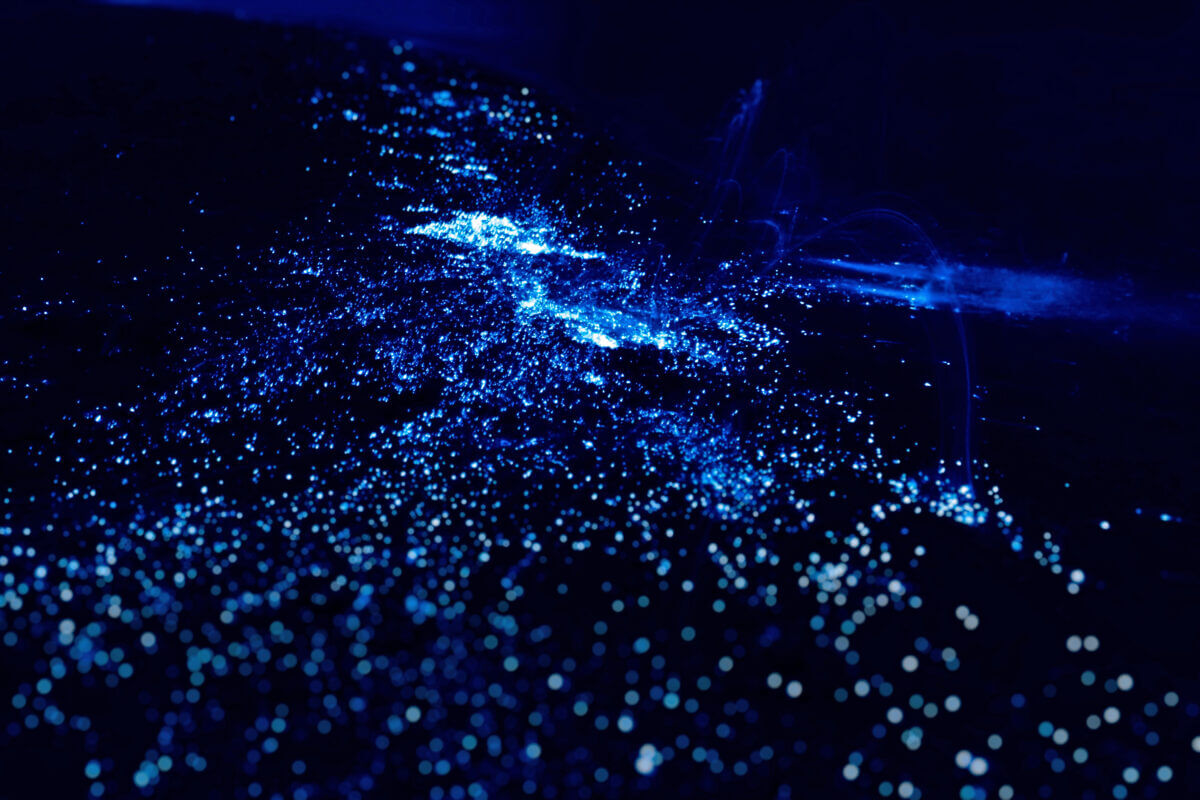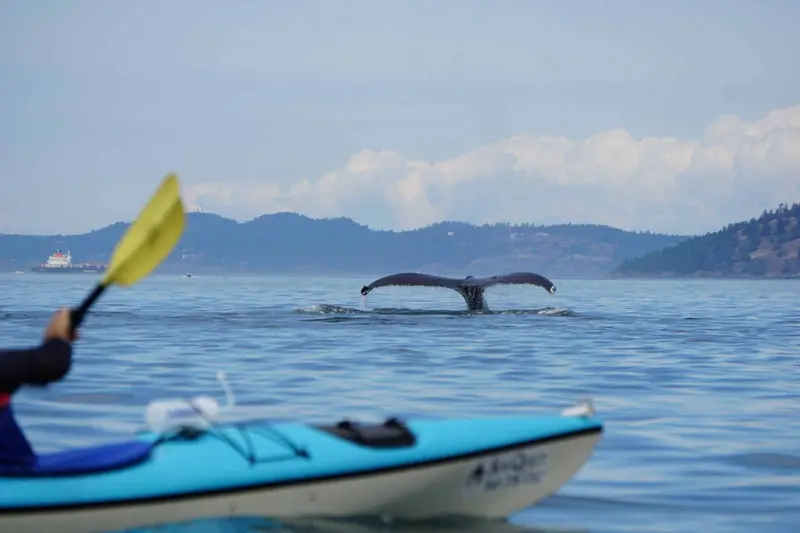Whale Watching Kayak Tours
What to Know
Whale Watching Kayak Tours with Sea Quest Kayak Tours
Every Sea Quest Kayak Expedition is designed for whale-watching – it’s our specialty! Our kayak tour routes traverse the legendary whale waters in the proper seasons: orca whales (killer whales) in the San Juan Islands, humpback whales in Alaska, and both gray whales and blue whales along the Baja coasts.
Sea Quest offers you the best opportunity to see and learn about whales and other marine wildlife from the perspective of a sea kayak. We have an excellent record of successful whale watching encounters on our kayak tours. Much of our reputation has been built upon this achievement. Our expert kayak guides will plan your kayaking route and campsites with whale and wildlife encounters in mind. Don’t be surprised if your guide knows certain whales by name!
But please remember, despite our expertise, whales are free-swimming creatures and we cannot guarantee sightings on any particular kayak tour.
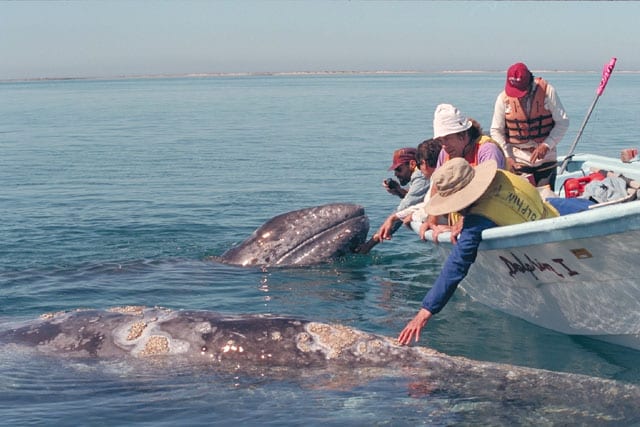
San Juan Islands Whale-Watching Kayak Tours
One of the most exciting aspects of a sea kayaking trip in the San Juan Islands is the chance to witness marine wildlife – often at close range. There are tidepools full of fascinating creatures, more than a hundred bald eagle nests, thousands of harbor seals, migrating salmon, and much more.
The San Juan Islands are one of the premier whale-watching locations in the world. The first park in the United States dedicated to whale-watching was created here, primarily for viewing the most dramatic residents of the archipelago, the orca (killer) whales. Pods with up to fifty family members use the San Juans as their core range. Besides the often-sighted orcas, there are several other species of whales found in the San Juan Islands. Minke whales, gray whales, humpback whales, Dall’s porpoises, and harbor porpoises are the other species most frequently seen.
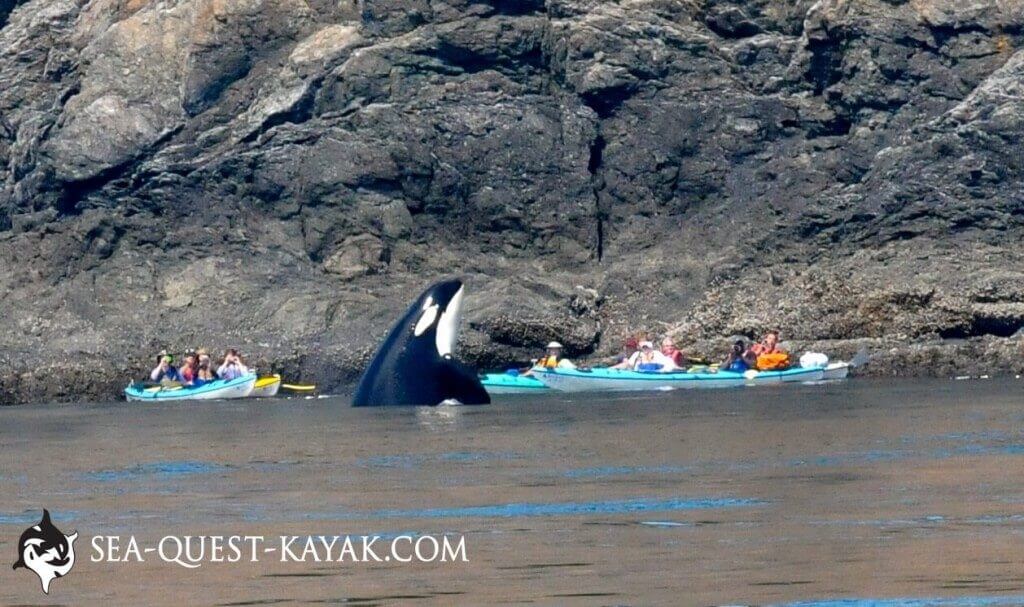
Orcas are most reliably observed from late April through early October with their activity peaking June through September. We used to see killer whales on close to 75% of our camping tours, but then declines led to their designation as an endangered species in 2005. From that point, we averaged seeing them on nearly 60% of our camping trips. However, the years 2019-20 were terrible for whale-watching as the orcas could not find enough salmon and our sightings were cut in half. We don’t know what the future will bring, but we will continue leading our kayak tours in the traditional feeding, traveling, and play areas that orcas favor in normal years. Regardless of the ups and downs in their struggle for survival, Sea Quest will maximize your chances for an encounter with these awesome and inspiring animals.
Porpoises sightings have also declined in recent years and are seen on about 50% of our kayak camping trips. Minke whales, gray whales, humpback whales, and white-sided dolphins are much less frequently seen but our regularly observed.
The resident orcas of the San Juan Archipelago are some of the most studied and well-known whales in the world; they in turn have observed humans closely for at least six thousand years. Stable family groups, called pods, represent several generations from grandmothers (the pod leaders), huge bulls, adolescents, to infants. Each family member may be recognized by its distinctive markings and can live as much as seventy or more years. Much of what is known about the orcas’ highly-organized social life has been learned from the resident pods you can observe in the San Juan Islands.
Many people ask us if it is safe to watch orca whales from a kayak. The answer is an emphatic YES! These intelligent predators have never injured a human in the wild. Orcas are extremely aware of their surroundings and do not collide with boats. They approach kayakers with the same respect that we offer them.

As far as other marine mammals go, the San Juan Islands are home to five thousand harbor seals and we see them in large numbers on all the kayak tours. Northern sea lions, California sea lions, and elephant seals are seen infrequently during the summer months but commonly in spring and fall. River otters and minks are frequently seen along shore on our camping tours.
Read more details about our whale watching success in the San Juan Islands where we specialize in finding orcas or killer whales. See graphs and historical data on our San Juan Islands Killer Whale Information page.
And visit our page about the baleen whales we see on kayak tours in the San Juan Islands.
Whale-Watching on Baja Mexico Kayaking Tours
Mexico’s Baja Peninsula conjures up exciting visions in the minds of adventure travelers. An image shared by many is that of graceful whales cruising through deep blue water. And rightly so, for the waters surrounding Baja California abound with an amazing variety of these giant mammals. Each species must seek out the perfect set of environmental conditions to survive: the right food, temperature, safe breeding sites, and other important factors are required. Most of the great whales have evolved survival strategies that include long migrations, months of fasting, and voracious feasting in very localized areas. As such, whale activity along the opposing shores of the Baja Peninsula contrasts markedly.
Bahia Magdalena
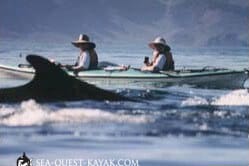
One of our whale-watching trips (non-kayaking) visits a sheltered lagoon along the Pacific Ocean called Bahia Magdalena. This shore is world-famous for supporting nearly the entire breeding population of gray whales, a species that has recently recovered from the brink of extinction. Making an annual migration of up to 6000 miles, these 50-foot animals take refuge in protected Baja lagoons during January and February. Winter is their season for birthing, nursing young, and rowdy breeding. Some of these gray whales have become “friendly” and enthusiastically approach vessels to be petted and rubbed by the humans on board. Looking into the eye of a whale, and feeling its whole body shiver from the pleasure of your touch, is an unparalleled wildlife experience! Sighting gray whales occurs several times each day on these trips.
Sea of Cortez
Our other two Baja trips use sea kayaks to travel the eastern shore of the peninsula, along the Sea of Cortez. This isolated sea is one of the last sanctuaries for the globally decimated blue and fin whales. Compared with other bodies of water its size, the Sea of Cortez supports the largest and most varied population of whales in the world: humpback, Bryde’s, minke, orca, and sperm whales also live there. Our route is carefully planned to take you to the only known place in the world where blue whales can be encountered by sea kayak.
Sea Quest trips experienced a 90% success at sighting large baleen whales in the Sea of Cortez. Sometimes we saw whales on only a single occasion but on other trips we had the fortune of seeing them nearly every day. These sightings ranged from lone individuals cruising the distant horizon to large pods lunging after prey around and beneath the kayaks! Keep in mind that oceanic conditions are not always consistent, and that if plankton blooms fail due to an extremely strong warm-water “El Nino” event, as in 1994, whale sightings may be scarce. In normal years, or weak El Nino years, our schedule coincides with vast blooms of plankton that draw the hungry whales in to gorge, sometimes in great numbers. Chances of seeing these awesome mammals are best from February through April, with a slight peak in mid-March. During other months the whales are typically widely scattered or have migrated into the Pacific Ocean.
On either side of the Baja peninsula, our whale watching season is also excellent for seeing playful saddleback and bottlenose dolphins, California sea lions, and an array of wonderful marine birds such as magnificent frigatebirds, blue-footed boobies, and brown pelicans. Due to the overlap of the temperate and tropical faunal zones, the Sea of Cortez boasts the greatest variety of fishes and marine invertebrates found anywhere along the eastern shore of the Pacific Ocean.
Sea Kayaking with Whales in Alaska
Many varieties of whales swim the green waters of Alaska. The two kinds we most often see on our kayak tours are the humpback whale and killer whale.
Both are happily the most acrobatic and socially complicated species in the world! And both humpback whales and orca whales reach some of their greatest global population densities in Alaska. Other marine mammals, including Dall’s and harbor porpoises, harbor seals, and the threatened Steller’s sea lion are common kayaking companions. Sea otters gather at favorite kelp forests along the routes, and gaze endearingly at passing paddlers. Overhead, bald eagles seem to perch on every point of land as they patiently await migrating salmon. Other marine birds, such as guillemots and murres, gather to nest in noisy rookeries.
